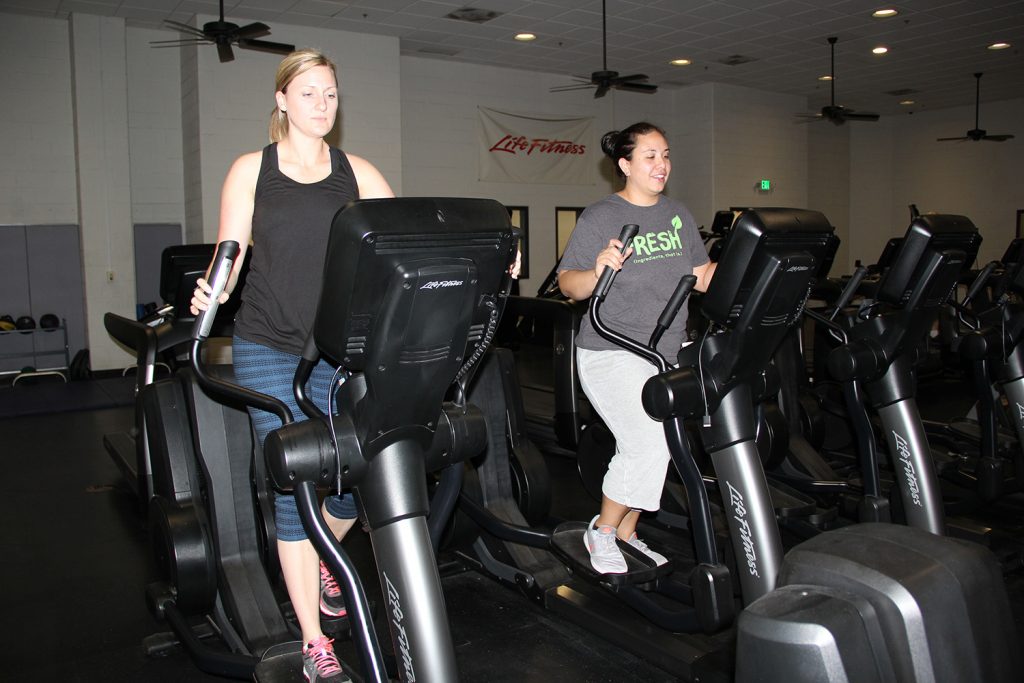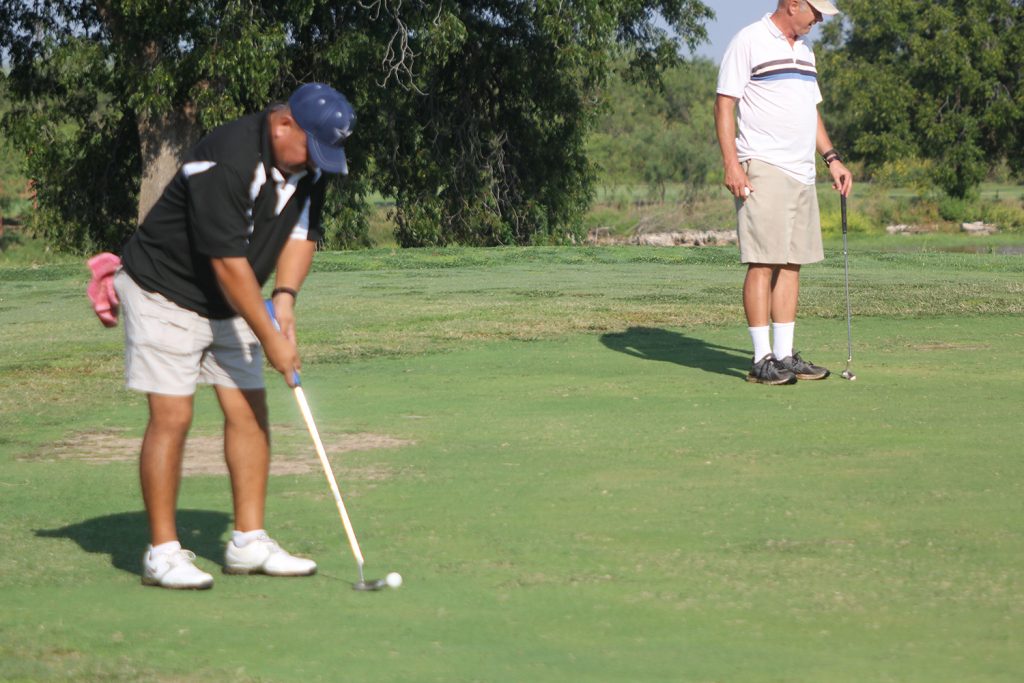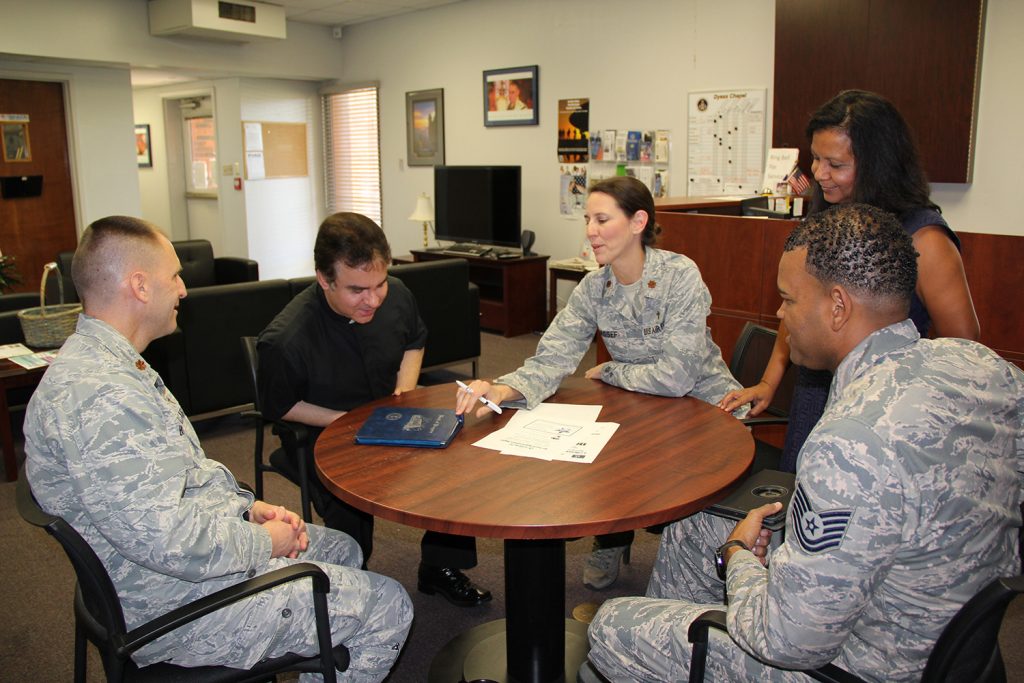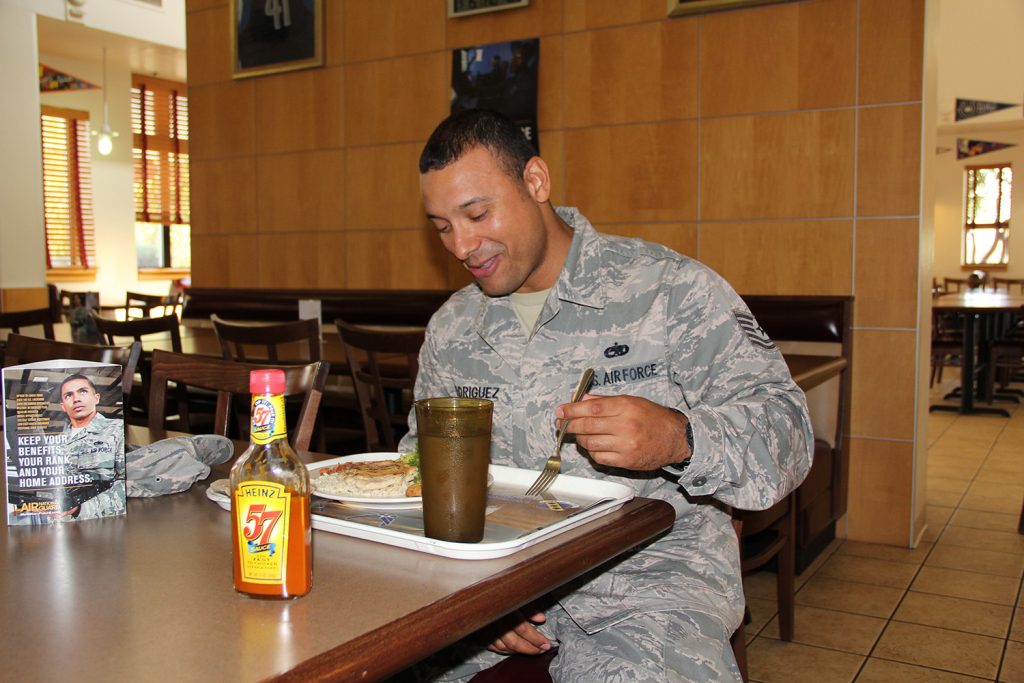By Scott Kirk
On a brilliant September morning, Dyess Air Force Base has the look of any city. People go to work, shop, to the gym. Perhaps it would be more accurate to say that rather looking like any city, Dyess is a city.
When you consider the 13,000 civilian and military personnel that make the home of the 7th Bomb Wing operate, Dyess Air Force Base, if regarded as a city unto itself, would be the second biggest city in Taylor County. What makes it more than just another city is that everyone has the same job – to support the mission of the 7th Bomb Wing as it contributes to national security. That means Reynaldo Padilla, the PGA golf pro at Mesquite Grove, has a job that goes beyond running a golf course. He’s aware that, ultimately, his job comes down to aiding the mission.
“We have a guy who works on the flight line,” said Padilla. “He has a very stressful job and when he comes here, he wants to have a good time and relax.”
Dyess spreads out over more than 6,000 acres, and there’s a lot more to it than flight line. You also realize that everything on it has to do with supporting the military personnel in doing its job. Maj. Marianne Nassef, the chaplain at Dyess, said it was important to remember that while building a team there also has to be consideration to individuals.
“People talk about boots on the ground,” she said. “We like to say that there are feet in those boots.”
Perhaps the best way to see how the “city” of Dyess Air Force Base contributes to the mission is to look at seven distinct areas of the base—the fitness center, Mesquite Grove Golf Course, the bowling alley, the youth center, the chapel, the Soul Fire Café and the dining facility.

THE FITNESS CENTER
The fitness center is 12 years old but has been updated to include state-of-the-art equipment. It provides 24-hour access to personnel. Equally important, Dyess is one of the few air bases that has physical therapists in its fitness center, allowing personnel to receive physical therapy without having to leave the base.
Sgt. Andrew Johnson, who works in the fitness center, said center takes a holistic approach to fitness, encouraging personnel to take part in competitive activity.
“It’s just a total fitness approach,” he said.
The center is also used by retired military who have access to the base.

MESQUITE GROVE GOLF COURSE
Padilla and course superintendent Tyler Johnson just came on board in June, but they hit the ground running.
“We put a lot of pressure on ourselves,” said Padilla. “We want to present a good product to our customers.”
The golf course is one of the places on the base where the population of Abilene interfaces with the base, but Padilla has stressed a program, the Single Airman Program, that in many cases has introduced airmen to the game.
“I would say about 20 of the 50 are new to the game,” he said.

BOWLING ALLEY
If golf isn’t an airman’s game, there’s also a 16-lane bowling alley that has been a part of the base almost as long as there’s been a Dyess. The alley expanded from eight lanes to 16 over the years, but, still, manager Steve Bush could use more room, particularly in the dining area. The Food Transformation Initiative of 2014, where airmen can use their meal cards to get meals in other areas, such as the bowling alley, has made the alley a popular dining spot.
“We’ve doubled the amount of food we serve,” said Bush. “We were told we’d double it, but we didn’t think that was right, but it’s turned out to be just about the case.”
Bush is justifiably proud of the condition of the lanes and pins, as well as the fact that the alley provides economical entertainment for both families and single airmen.
“It’s a good place for them to come in and blow off steam,” he said. “These activities are huge. Some of them (the airmen) don’t have cars. It enhances the quality of life.”
YOUTH CENTER
When Diane Areskog began running the youth center 28 years ago, she made do with 5,800 square feet. Since 2008, she’s had a 25,000 square foot facility. She uses about every inch of it.
The youth center is divided into three areas—one for “tween,” (ages 9-12), one for school age children (5-8) and another for teens. The center provides not only safe places for children to play, but also places for them to study. Areskog said that the children also learn social skills as well as life skills like cooking.
The center opens at 6:30 in the morning where the younger children are fed breakfast and then taken to either Dyess or Bassetti elementary schools. During the school year, the center is open from 2:30-6 p.m. on school days (11 p.m. on Friday) and from 4 p.m.-11 p.m. on Saturday. Older students can go into the area with younger children, but not the other.
“This way they (older children) can mentor,” said Areskog. “This way, it’s all about family.”
The center will also extend its hours during exercises, a concession Dyess parents wouldn’t get at daycare in the civilian world.

CHAPEL AND SOUL FIRE CAFÉ
These two are combined since Nassef, who is in her second tour at Dyess, supervises both. The chapel provides a protestant and catholic service and is also available for personnel who want to use it for other services or other functions.
“It runs the gamut,” she said. “We’ve had weddings and memorial services and baptisms here. We are not any particular religion. We provide for the free exercise of religion.”
However, much of what Nassef provides is not a church service.
“Counseling is probably the bigger part of it,” she said.
The Soul Fire Café is run by airmen for airmen, although Nassef serves as a sort of sponsor. The café allows no alcohol, since many of the airmen who use it are not yet 21, but there is a serious coffee and smoothie bar, as well as a TV room, small concert stage and even a recording studio, a memento to a time when some airmen were avidly interested in recording music. Again, said Nassef, the idea is to provide younger airmen, many of whom may not have transportation, a place where they can go and meet with other airmen in a social setting.
“This is one to those intentional places where we try to get airmen to socialize,” she said.

DINING CENTER
This is definitely not your father’s cafeteria. Gone is the single line of industrial-style food and in its place are lines where personnel can get pizza, burgers, fresh hot sandwiches and Mongolian stir fry.
Lt. Matt Baldwin said he serves between 500-600 meals a day.
“One of the most popular things we serve is our chicken fried chicken,” he said.
The dining facility underwent the change from a legacy dining facility, which served only airmen, to a dining facility open to everyone in the Food Transformation Initiative. Baldwin said the menu is set by the Air Force and there are special meals on Easter (steak and lobster), Thanksgiving (full turkey dinner) and Sept. 18, the Air Force’s birthday (steak). Another special occasion happens each quarter when airmen’s birthdays are celebrated with a steak and shrimp dinner.
“It’s usually served by the sergeants,” said Baldwin. “It’s a pretty special thing.”

























Leave a Reply